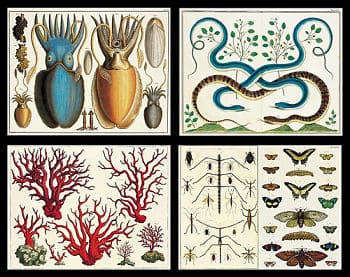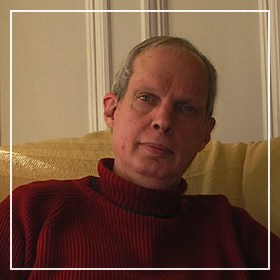Some object to the word ‘crisis’. However, it is useful for describing the sense that what seemed to be an understandable present and a plausible future have become unpleasant, obscure and even unrecognisable. That sense is, a colleague suggested, what would have led to Gramsci’s question: Everything seemed possible on the streets of Turin in 1920, so how did I end up in this Italian prison? In that sense, much of anthropology has been undergoing a crisis since the early years of this century, marked by things like books entitled The end of anthropology? (Jebens and Kohl 2011).
One common response to crisis is to promulgate a radical vision for a new future that rejects the past, the sort of thing that occurs among some anthropological advocates of ontology (Bessire and Bond 2014). It may, however, be better to look backward before envisaging a new future, to see how we got to the streets of Turin and then to this prison. To do that, it is helpful to pause for a moment from our doing of anthropology and instead think about the discipline, or at least its most visible branches, in a broader context.

A noteworthy feature of that broader context is a different crisis. That is the economic crisis that began around 2008 and turned into the Great Recession. These crises are two faces of the same thing, the failure of what commonly is called neoliberalism, which I take to include the neoclassical economics that is its intellectual foundation.
In the closing decades of the twentieth century the orientation of neoliberalism pervaded more than government ministries and political debate. In addition, it pervaded the work of those who occupied the commanding heights in anthropology, though it did not do so under its own name. The crisis in anthropology and in the world economy are reflections of the shortcomings of that orientation. The shortcomings of concern here are those that led to the sense that anthropology had lost its way, that, as George Marcus (2008: 2) put it, the discipline is ‘in suspension’, with ‘no new ideas and none on the horizon’.
Neoliberal anthropology
In the discipline of economics and in electoral politics the rise of neoliberalism meant the rejection of what had gone before. That had been a set of orientations and policies that used Keynesian macroeconomic models to describe and make sense of a country’s economy, and to figure out what government could do to improve things. In economics in the 1970s Keynesian approaches were replaced by neoclassical ones, and in politics in the years around 1980 that orientation lost ground to the neoliberalism of Margaret Thatcher in the UK and Ronald Reagan in the US.
What replaced that old orientation was the assumption that autonomous individuals are the best judge of their own interests, which they could best realise through transactions in a free market.
Microeconomics replaced macroeconomics; a focus on individuals and their desires replaced a focus on systems and their operations; government as the minimal guardian of free markets replaced government as the formulator and implementer of notions of the common good.
These changes reflected more than currents of thought in university departments of economics and government ministries. In addition, they reflected social movements in Europe and North America, the home of the most influential anthropology at the time. Those movements objected to government policies and social practices that were seen to deny individual freedom – autonomy under a different name. The 1960s and 1970s saw the civil rights movement in the United States, the women’s liberation movement and protest against the American war in Vietnam in many countries, and the events of May of ’68 in France.
Anthropology was not immune to these movements, and many anthropologists took part in them. It should be expected, then, that intellectual orientations in the discipline began to change at around the same time, and in a similar direction.
One aspect of this was the Cultural Turn, which drew on the work of Clifford Geertz (esp. 1973) and which affected the social sciences generally. Geertz argued that we should focus solely on culture, on how people perceive and think about their lives, and that our job is to describe that culture, not to explain it. This meant that we should forego attention to those things that are outside of people’s awareness, whether because they are distant from people’s lives and hence invisible to them or because they are nearby but not, for whatever reason, objects of attention and cultural elaboration. Such a stance makes it more difficult to identify systems or structures, such as the system of the kula ring, invisible to individuals who participated in it, or the economic system that Keynesian macroeconomists investigated, invisible to individuals who bought and sold in their familiar shops and markets.

A different and more explicit challenge to the idea of system also was emerging around the time of the Cultural Turn, and it also affected the social sciences more generally. Sherry Ortner produced an influential summary of this criticism in the middle of the 1980s. She said that attention to system is not enough, that we need to pay more attention to people and their lives. As she (1984: 148) put it, the question we need to address is ‘the relationship(s) that obtain between human action, on the one hand, and some global entity which we may call “the system,” on the other’.
Ortner’s criticisms were taken in various directions, but ultimately many anthropologists ended up ignoring her point that we need to address the relationship between systems or structures and human action. Instead, her point got turned into a rejection of structure, poststructuralism, as many in the discipline embraced what came to be called ‘everyday life’ and ‘lived experience’ and the perspective of those who experienced that life.
It seemed that Margaret Thatcher was right: There is no such thing as society.
Two of the arguments put forward to justify and encourage this change were especially influential and noteworthy. One was the assertion that societies and cultures contain so many divergent perspective and experiences, and that their boundaries are so porous and indeterminate, that we can not speak of them as ordered wholes. Rather, the best we can do is describe the complexity and fluidity that our research reveals. The second was the assertion that to think in terms of systems or structures means imposing a Western and Modern frame on a world to which it does not really apply.
As a result of these and other arguments, more and more anthropologists sought to describe the otherness, the difference from the Modern West, that they found in the field. As Patricia Spyer (2011: 62) put, anticipating the growing disciplinary interest in ontology, we must reject ‘any attempt to domesticate such otherness by either explaining it away or reducing it to something already known and comprehensible.’
Thus it was that the critics of the old order kicked away one of the two legs on which, Radcliffe-Brown (1952) said long ago, the discipline stands. One of those legs is the description in anthropological terms of what the researcher sees in the field, which Radcliffe-Brown called ‘ethnography’. The other is the development of reasonably valid generalisations about social life in a range of societies, what he called ‘comparative sociology’. The critics rejected the comparative sociology and restricted themselves to the ethnography, and increasingly one that attended to the distinctive perspectives and experiences of smaller and smaller sets of people.
A growing number of influential anthropologists, then, saw their task as attending to, even celebrating, people’s perspectives on the world, while refusing to attempt to explain those perspectives. In that, those anthropologists came to echo important aspects of neoliberalism and the neoclassical economics on which it draws.
The equations and graphs of neoclassical economics are intended only to summarise transactions in a market in a pure form, just as market price is taken to reflect the aggregate of those transactions in monetary terms. Neither the economists nor the price attempt to identify the reasons why people buy or decline to buy what they do, for they are focussed on the moment of transaction itself. Those reasons are assumed to reflect people’s values, but they are treated as given, beyond the scope of the economic models and money prices. In this, they look a lot like anthropologists who observe people’s cultures, their perspectives and orientations, but restrict themselves to recording them and do not try to account for them.
For the more thorough-going of those anthropologists, what people say and do is treated simply as an expression of what is unknowable but can only be inferred, their culture. In the same way, what people do in their market activities is treated as their ‘revealed preference’, which can be used to infer what is also unknowable, the inner state of mind that is their true preference.
And just as neoliberalism is a celebration of the free market, where people transact in ways that express their preferences, so much of anthropology sees itself as a celebration of diversity, of people acting in ways that express their cultures.
Autonomy and anthropology
I have argued that, in the last quarter of the twentieth century, an important stream in anthropology, probably the dominant stream in American anthropology, followed an intellectual course that resembled the intellectual course of economics. In both, a concern with systems or structures was rejected as illegitimate. In both, attention turned instead to individuals, in the case of economics, and to ever smaller sets of people, in the case of anthropology. In both, the only legitimate public activity was encouraging people to express their orientations, by expanding the scope of the market in economics or by celebrating diversity in anthropology.
The individualism that these two disciplines embraced has been attractive to many, but it has had some unfortunate, unforeseen consequences.
For neoliberals and economists, it meant the encouragement of orientations and policies that led to the Great Recession. Doubtless those people intended no such thing, but the limitations of their perspective were such that their policies and arguments resulted in hardship for many people around the world.

Those anthropologists, and others, who embraced the liberation movements of the 1960s and 1970s saw individual autonomy as a way to correct the injustices of the old order. It may have corrected some of them. However, and however unintentionally, it presaged what looks like increased injustice, a growing repression of disadvantaged groups in many of the Western countries that were the home of those movements, a repression suggested by the rising proportion of the population that ended up in jail (Wacquant 2010). Finally, for anthropology the growing interest in celebrating the diversity of cultures, coupled with an aversion to explaining any of them, runs the risk of turning the discipline into what Nicholas Thomas (1991: Chap. 4) described, cabinets of curiosity. They were popular among early English travellers to the Pacific, who used them to display the curious things that they had collected on their travels, things that they made no effort to understand.
For anthropologists who seek to understand the world that they confront, who want to know not simply what is there but why it takes the form that it does, this is not a pleasant place to be.
References
Bessire, Lucas and David Bond 2014. Ontological anthropology and the deferral of critique. American Ethnologist 41 (3): 440–56.
Geertz, Clifford. 1973. The interpretation of cultures. New York: Basic Books.
Jebens, Holger and Karl-Heinz Kohl (eds). 2011. The end of anthropology? Wantage (UK): Sean Kingston Publishing.
Marcus, George E. 2008. The end(s) of ethnography: social/cultural anthropology’s signature form of producing knowledge in transition. Cultural Anthropology 23: 1–14.
Ortner, Sherry. 1984. Theory in anthropology since the sixties. Comparative Studies in Society and History 26: 126–66.
Radcliffe-Brown, Arthur R. 1952. Structure and function in primitive society. London: Routledge & Kegan Paul.
Spyer, Patricia. 2011. What ends with the end of anthropology? In The end of anthropology? (eds) Holger Jebens and Karl-Heinz Kohl, pp. 61–80. Wantage (UK) Sean Kingston Publishing.
Thomas, Nicholas. 1991. Entangled objects. Cambridge, MA: Harvard University Press.
Wacquant, Löic. 2010. Crafting the Neoliberal State: workfare, prisonfare, and social insecurity. Sociological Forum 25(2):197–220.






“Geertz argued that we should focus solely on culture, on how people perceive and think about their lives, and that our job is to describe that culture, not to explain it.”
Jim, what you repeat here is a common, but still profoundly misleading, interpretation of Geertz. Geertz was very much a product of the Harvard Human Relations Program and his concept of culture was not confined to how people perceive and think about their lives. Culture as a public text also included artifacts and landscapes, products of human activity as well as what people said about them.
That said, the “Geertzian” position you describe has had the unfortunate effects you describe.
P.S. It has been a long time. I hope this comment finds you well.
This is how I read Geertz. Cultural acts are the construction of symbolic forms used to interpret the world. These also motivates people to feel in a specific way about events in life (p. 97). A religious perspective is applied in the everyday encounters with pain, moral issues etc. enforcing their actuality (p.112) rather than analysing them. In ritual “the world lived and the world imagined” (p. 112) is fused. The gift of religion is its power to organize the understanding of life, and guide action.
Geertz is inspired by Gilbert Ryle and his project is to promote a semiotic approach to the analysis of culture by making “thick descriptions” of cultures, moving from the particular towards a more general description of culture.
“The aim is to draw large conclusions from small, but very densely textured facts; to support broad assertions about the role of culture in the construction of collective life by engaging them in exactly with complex specifics.” (p. 28)
I am not sure what conslusions to draw with regard to Geertz view on the possibility of understanding the role of culture. To me he seems to say, that analysis cannot begin with reflections on the macroentity (culture). That thick description forgo interpretation and understanding because the description might reveal a pattern of meanings shared by a population.